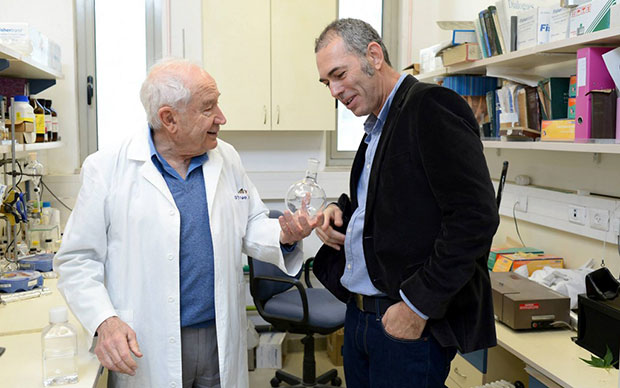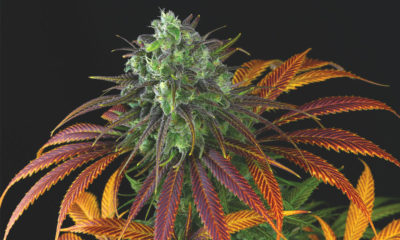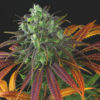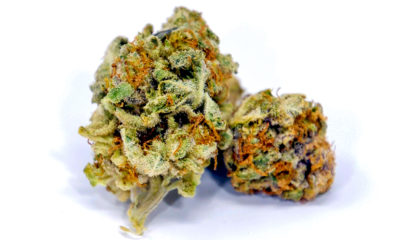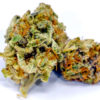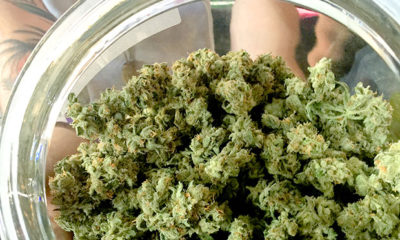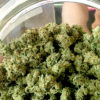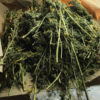Dr. Mechoulam Talks About the Future of Cannabis Research
Israeli scientist Dr. Raphael Mechoulam established modern cannabis research almost single-handedly, first when he elucidated the structure of CBD in 1963 and then again in 1964 when he isolated and described THC.
After a career in organic chemistry spanning 50 years and with numerous other important discoveries into the nature of marijuana under his belt, the father of pot research opened up to Cannabis Now about the past, present and possible future of medicine.
Cannabis Now Magazine: You are credited with isolating both delta-9 THC and CBD, the two most widely discussed exogenous cannabinoids today. What other cannabinoids have captured your attention lately, and what have you learned about them?
Dr. Raphael Mechoulam: In 1963, I isolated cannabidiol (CBD) from hashish and elucidated its structure. This non-psychoactive cannabis constituent had been isolated from marijuana in the late 1930s by Roger Adams, in the U.S. and by Alex Todd in Britain, but its structure was unknown. Todd later got the Nobel prize for other research.
In 1964 my colleague Yehiel Gaoni and I isolated tetrahydrocannabinol (THC). This cannabis constituent had never been isolated previously in pure form. We elucidated its structure and synthesized it from cannabidiol. Our colleague Dr. Habib Edery tested in monkeys. Over the next few years we reported its stereochemistry (absolute structure in space) and reported a facile synthesis. THC is the only psychoactive cannabis constituent, but its activity may be modified by CBD.
Read More: The Endocannabinoid System for Beginners
The U.S. National Institute of Health (NIH) became interested in our research and has financially supported it ever since. NIH never interfered with the research in my lab and never suggested what we should – or should not – do.
Over the next few years we isolated numerous new cannabis constituents, which we named cannabinoids. Amongst them are cannabigerol, cannabichromene, cannabielsoic acid, named after my technician Elsa, cannabicyclol and others. None of these showed THC-like activity in monkeys and very little research has been done on them. However CBD is a potent anti-inflammatory agent and several hundred papers on its activity have been published.
In the 1990s we isolated from brain and intestines the first endogenous cannabinoids anandamide and 2-AG. There has been a huge amount of research on these 2-body constituents.
CNM: In sharp contrast to policy in the U.S., the government of Israel has been notably supportive of cannabis research. What, in your view, has been the most helpful policy to support research like yours and what is the most important reform Israel or any other country could undertake to further augment our understanding of this plant?
RM: To my best knowledge NIH, through NIDA [the National Institute on Drug Abuse], has supported much preclinical cannabinoid research. Many of the major discoveries in the field were done with NIDA support. Researchers within NIH have done outstanding work on cannabinoids.
Clinical research with cannabinoids is difficult to undertake in any country. In Israel, cannabinoid research has been done in all universities, but financial support is limited, as in all fields. There are about 10 groups doing preclinical work and five to six groups doing clinical research. This relatively extensive activity may be due to the fact that we got involved already 50 years ago. Clinical research, as in all developed countries, requires approvals by hospital and government committees, which demand strict supervision. I should point out that cannabis clinical research has to be done with material which is well defined, namely either pure THC or CBD, or possibly with plant material with well determined levels of constituents. Stating “I am doing Cannabis research” does not mean a thing unless the levels of at least THC and CBD are known.
Based on the local experience with cannabis, the Ministry of Health here has approved the use of medical marijuana, under strict medical supervision. The rules are now changing. Most of the cannabis reaching patients shall contain both THC and CBD at different levels. There is a list of medical conditions for which cannabis is approved.
I expect that by proper supervision we shall have “personalized medicine” as obviously different amounts of cannabinoids may be needed for different conditions. This is of high importance as physicians at present are reluctant to prescribe just “cannabis”, without exact knowledge of the levels of THC and CBD and published detailed scientific-medical data on use of cannabis in specific diseases. I believe that bringing cannabis as a medicine to parallel the use of approved drugs will be a major step forward.
CNM: In describing the astonishing variety of symptoms cannabis seems to soothe, some authors have hypothesized that activation of the endocannabinoid system works on a deep layer of the central nervous system to encourage and support homeostasis throughout the body. What is your opinion of this theory?
RM: It seems that the endocannabinoid system is quite central in helping keep many neurotransmitters and modulators at desired levels – homeostasis. We have suggested that the mammalian body has a highly developed immune system, whose main role is to guard against protein attack and prevent, reduce or repair a possible injury.
It is inconceivable that through evolution analogous biological protective systems have not been developed against non-protein attacks. Are there mechanisms through which our body lowers the damage caused by various types of neuronal as well as non-neuronal insults? The answer is of course positive. Through evolution numerous protective mechanisms have been evolved to prevent and limit tissue injury.
We believe that lipid signaling through cannabinoid 2 (CB2) receptors is a part of such a protective machinery and CB2 receptor stimulation leads mostly to sequences of activities of a protective nature. Inflammation/tissue injury triggers rapid elevations in local endocannabinoid levels, which in turn regulate fast signaling responses in immune and other cells modulating their critical functions.
Endocannabinoids and endocannabinoid-like molecules acting through the CB2 cannabinoid receptor have been reported to affect a large number of pathological conditions, ranging from cardiovascular, gastrointestinal, liver, kidney, lung, neurodegenerative and psychiatric disorders to pain, cancer, bone, reproductive system and skin pathologies. This receptor works in conjunction with the immune system and with various other physiological systems.”
CNM: Millions have used cannabis in religious ritual and authors like Baudelaire, Huxley and Ginsberg have written of their spiritual experiences while under its influence. Do such discussions of mysticism and religious experience have any place in scientific discourse?
RM: Mysticism, religious and spiritual experiences, and even emotions, cannot be based on present-day scientific knowledge. Even if we knew every single detail of our biological – chemical structure I wouldn’t know why I feel happy when I see my granddaughter, age three, rushing towards me to give me a hug.
CNM: Are there any other exciting developments in your work which you would like to share with our readers?
RM: We have a very large number of anandamide-like compounds in our brain and elsewhere. They seem to be involved in various protective mechanisms – brain trauma for example or even osteoporosis. We have speculated that if subtle chemical disparity is one of the causes for the variability in personality – an area in psychology that is yet to be fully understood – we may have to look for a large catalog of compounds in the brain with distinct CNS effects.
Is it possible that the above-described large cluster of chemically related anandamide-type compounds in the brain is related to the chemistry of the human personality and the individual temperamental differences? It is tempting to assume that the huge possible variability of the levels and ratios of substances in such a cluster of compounds may allow an infinite number of individual differences, the raw substance which of course is sculpted by experience… If this intellectual speculation is shown to have some factual basis, it may lead to major advances in molecular psychology.”
CNM: Finally, do you have any advice for voters and lawmakers in the U.S. and around the world who may be considering some kind of cannabis policy reform?
RM. I believe that medical cannabis should be an approved drug. It should be well regulated. The material supplied to patients should have established levels of THC and CBD and based on research physicians should be able to prescribe the dose needed. Hence additional clinical research should encouraged.
Originally published in issue 7 of Cannabis Now. LEARN MORE
Should the U.S. fund more cannabis research? Let us know below.



